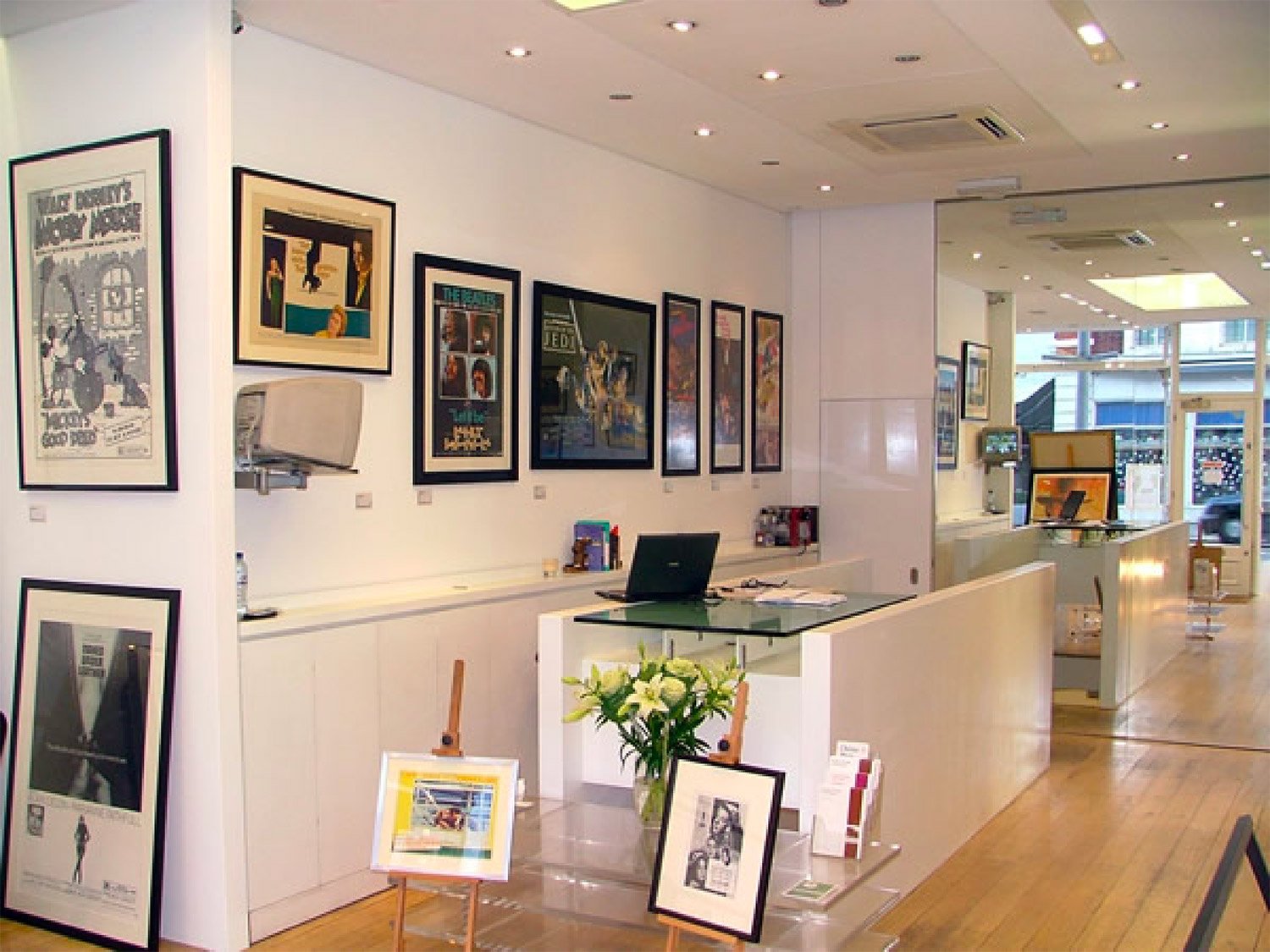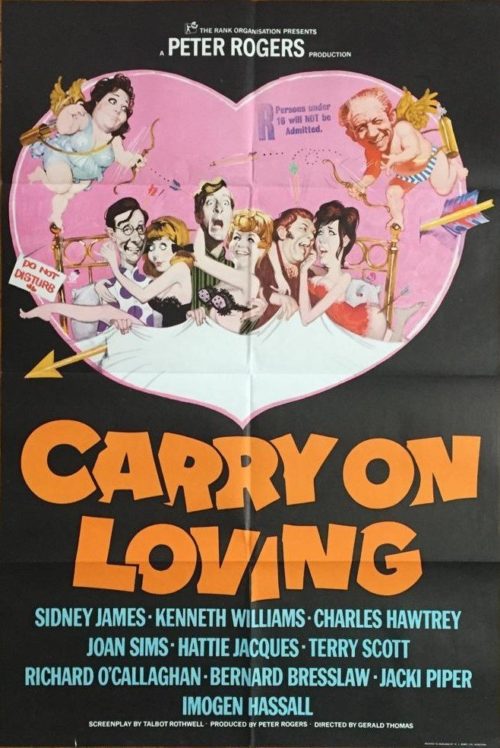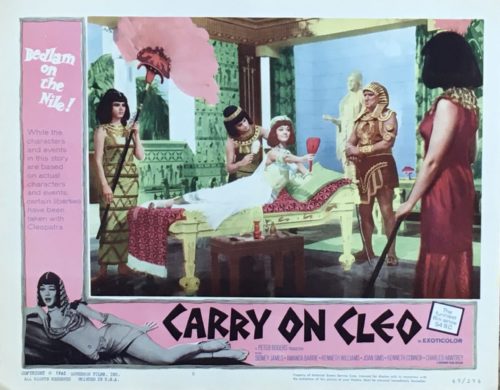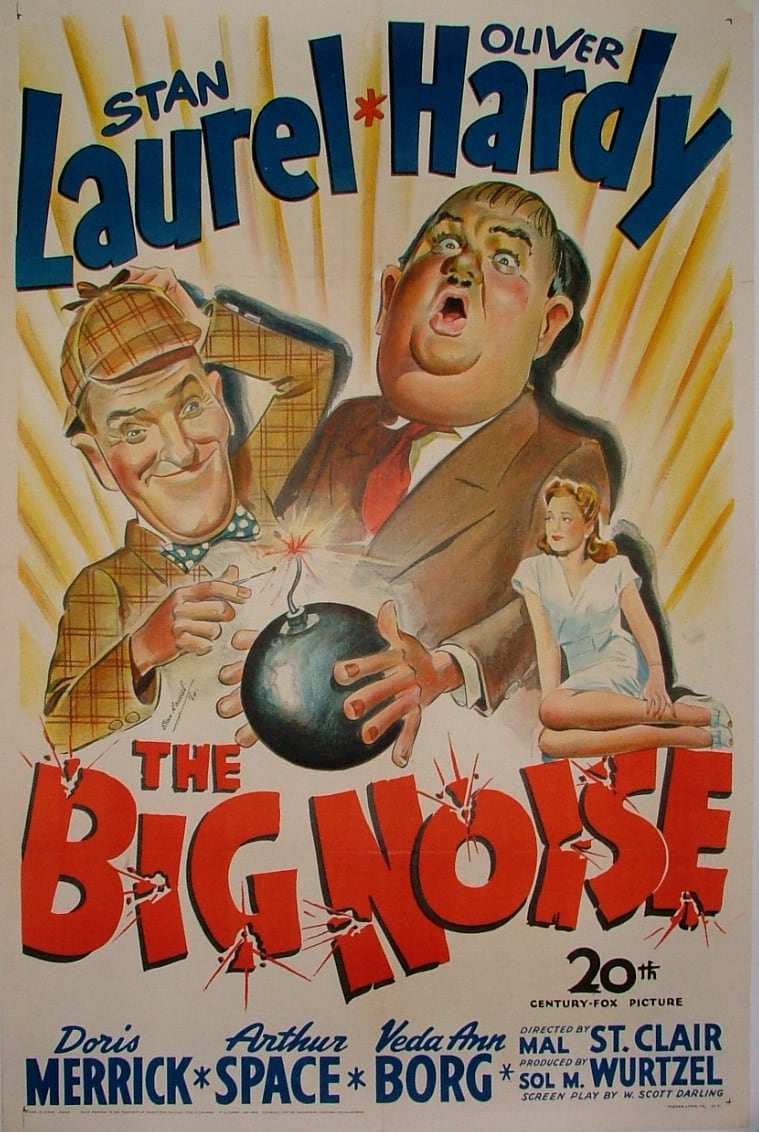The Carry On Series
As British as a Donald McGill postcard and just as subtle, the Carry On series seems to have been with us forever and is part of our comedy fabric. Running initially from Sergeant in 1958 to Emmannuelle in 1978, reviving for Columbus in 1992, it even now threatens to return from time to time.
Robert Ross published four books in not many more years about the enduring popularity of the Carry On series. So what can be said in one page?
It all began when producer Peter Rogers decided to make a conscription comedy (it was perhaps also part drama, and with a little romance thrown in) based on army stories by the popular novelist, R F Delderfield.
1958’s “Carry On Sergeant”, directed by Gerald Thomas and with William Hartnell (tv’s first Dr Who) in the title role, was sufficiently successful for a follow up to be made by the same team. The result was the first of many trips into the medical world, with “Carry On Nurse”. 20 years later, the total of Carry Ons had risen to thirty.
No-one appeared in them all, but the faces most closely associated with them are Sid James, Kenneth Williams, Charles Hawtrey (who would never accept less than third billing), Kenneth Connor, Hattie Jacques, Barbara Windsor and Peter Butterworth.
And a long list of regulars and semi-regulars such as Jack Douglas and Terry Scott. Leslie Phillips was there in a few of the early outings. Jim Dale had a spell as the “straight” male lead. Stars from popular television were imported from time to time, including Frankie Howerd, Harry H Corbett, Kenneth Cope, Windsor Davies, and even Bilko, Phil Silvers.
But as Peter Rogers always said, the name and the brand were the real stars, and the continued popularity of the franchise on tv, video, DVD, Blu-Ray, book and merchandising bears testament to that.
The films usually followed the same formula, and sometimes even used the same jokes. But they fell broadly into two categories. First, the period or costume outings – bringing them into contact with Henry VIII, Dick Turpin, the Scarlet Pimpernel(ish), the Foreign Legion, the merchant navy and even Christopher Columbus.
Second, the contemporary settings, including the various branches of the medical profession, the public services, the armed forces, campsites and cruise ships.
They got a bit political in “…At Your Convenience”, but never made that mistake again.
For most people (including film historians and academics who insist on voting for “… Up the Khyber as the funniest British film of all time. It isn’t) they were at their peak in the mid 1960s. At this point, they started to spoof – and maybe even to satirise – popular genres and blockbusters. “Spying” was a very funny Bond spoof. “Cowboy” was surprisingly true to the feel of that genre. “Screaming” was almost as scary as a Hammer Horror. And Cleo was a fantastic take on one of the biggest blockbusters in cinema history, the overblown “Cleopatra” with Taylor and Burton.
Wouldn’t we all rather have Sid and Barbara?
Some of our current Carry On stock
-

Carry On England
£395.00In stock
Format: One SheetView -

Carry On – Don’t Lose Your Head
£1,750.00In stock
Format: QuadView -

Carry On Cleo
£450.00In stock
Format: One SheetView -

Carry On Loving
£325.00In stock
Format: One SheetView -

Carry On Cleo
£125.00In stock
Format: Lobby CardView -

Carry On Cleo
£125.00In stock
Format: Lobby CardView -

Carry On Cleo
£145.00In stock
Format: Lobby CardView -

Carry On Cleo
£135.00In stock
Format: Lobby CardView -

Carry On Cleo
£125.00In stock
Format: Lobby CardView -

Carry On Again Doctor
£495.00In stock
Format: One SheetView















